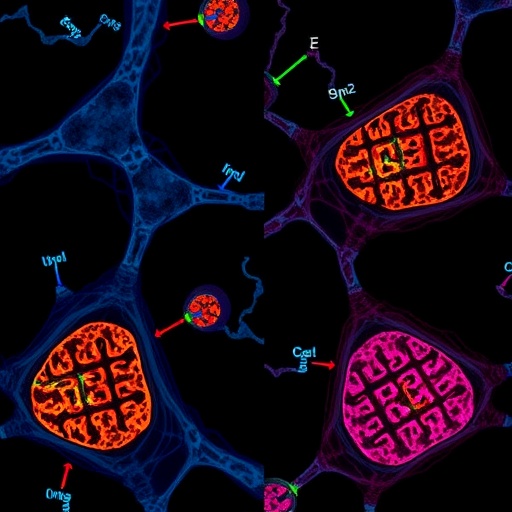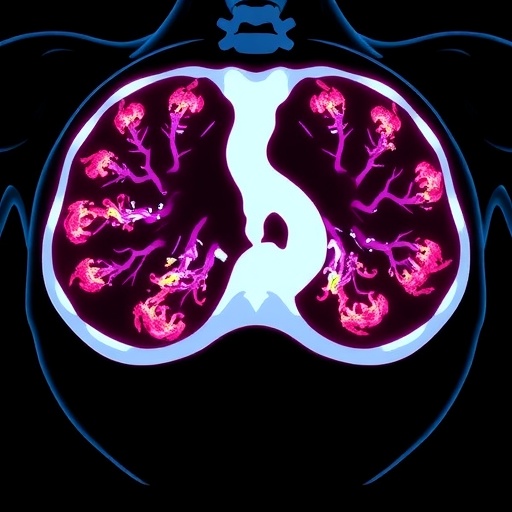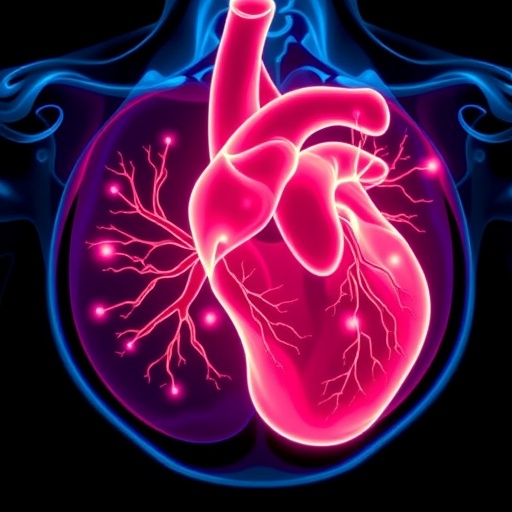Recent studies have highlighted the complexities and challenges in treating germ cell tumors, particularly those that exhibit resistance to standard chemotherapeutic agents like cisplatin. A landmark investigation has centered on the expression and therapeutic potential of TROP2, a protein that has garnered attention due to its prospective role in tumor biology and treatment response. Researchers from various institutions have collaborated to unveil the significance of TROP2 in cisplatin-resistant germ cell tumors, presenting findings that could reshape treatment paradigms.
At the forefront of this research is the understanding that germ cell tumors can evolve and adapt, often developing resistance to conventional treatments. Cisplatin has long been the cornerstone of therapy for these tumors; however, its effectiveness can wane over time as tumors undergo genetic mutations and other changes. This phenomenon of drug resistance not only complicates treatment but also significantly impacts patient outcomes. Hence, exploring alternative therapeutic targets becomes paramount in the quest for improving survival rates for patients grappling with advanced disease.
The protein TROP2, also known as trophoblast cell-surface antigen 2, has been implicated in various malignancies due to its role in cellular proliferation and metastasis. Elevated expression levels of TROP2 have been associated with poorer prognoses in several cancer types, suggesting that it may serve as a vital tumor marker. In germ cell tumors, understanding the molecular pathways associated with TROP2 could unlock new avenues for targeted therapy, especially for those patients who find themselves with limited treatment options due to resistance.
The recent research has employed both in vitro and in vivo experimental models to analyze TROP2 expression in cisplatin-resistant cell lines derived from germ cell tumors. These models revealed that tumors exhibiting resistance showed markedly increased expression levels of TROP2 compared to their cisplatin-sensitive counterparts. Such findings raise the hypothesis that TROP2 might not only be a marker of resistance but could also play a direct role in the survival and proliferation of these resilient tumors.
One of the most groundbreaking aspects of the study is the investigation of TROP2 as a therapeutic target. By utilizing monoclonal antibodies designed to specifically bind to TROP2, researchers were able to demonstrate a marked reduction in tumor growth in preclinical models. This targeted approach paves the way for the development of antibody-drug conjugates that could deliver potent cytotoxic agents directly to the tumor cells, minimizing damage to healthy tissues and enhancing the therapeutic index.
Moreover, the study delves into the molecular mechanisms by which TROP2 contributes to chemoresistance. It appears that TROP2 may be involved in pathways that regulate apoptosis, allowing cancer cells to evade programmed cell death and persist despite ongoing treatment. By dissecting these pathways, researchers can identify potential combination strategies that include TROP2-targeted therapies alongside existing cisplatin regimens to overcome resistance.
Additionally, the research underscores the need for personalized treatment strategies. Given the heterogeneity of germ cell tumors and the varying levels of TROP2 expression, patient stratification based on TROP2 levels could optimize therapeutic interventions. This approach not only bolsters the rationale for targeting TROP2 but also enhances the potential for successful outcomes through tailored treatments that account for individual tumor biology.
Patient advocacy groups and oncologists alike are keenly interested in these findings, as they represent a step towards more effective and personalized care for patients with germ cell tumors. The prospect of a targeted therapy aimed at TROP2 could transform the narrative surrounding treatment resistance, providing hope for individuals who have exhausted traditional treatment options.
As the research continues to evolve, the clinical implications of these findings will likely prompt further investigations aimed at validating the efficacy of TROP2-targeted therapies in human clinical trials. The integration of biomarkers into routine clinical practice could potentially shift the standard of care, leading to enhanced survival rates and improved quality of life for patients facing the daunting challenge of drug-resistant germ cell tumors.
While TROP2 presents a promising avenue for therapeutic intervention, it is essential to recognize that challenges remain. The complexity of cancer biology necessitates a comprehensive approach to treatment that not only considers single-target strategies but also the multifaceted nature of tumor evolution. As researchers delve deeper into the mechanisms surrounding TROP2 expression and its influence on cisplatin resistance, the collective aim will remain centered on improving patient outcomes and refining cancer care strategies.
In conclusion, the exploration of TROP2 as a potential therapeutic target in cisplatin-resistant germ cell tumors signifies a pivotal advancement in cancer research. This innovative approach not only enhances the understanding of tumor biology but also embodies the spirit of scientific inquiry that aims to bridge the gap between research advancements and clinical application. As future studies unfold, the collaboration between scientists, clinicians, and patients will be integral to transforming these insights into tangible benefits for those affected by cancer.
These profound findings highlight the critical intersections of molecular biology, therapeutic innovation, and patient-centric care, all of which contribute to the ongoing battle against cancer. It is the hope of the research community that with concerted efforts, the story of germ cell tumors can evolve into one of resilience and triumph against the odds.
Subject of Research: The expression and therapeutic potential of TROP2 in cisplatin-resistant germ cell tumors
Article Title: Expression and therapeutic potential of TROP2 in cisplatin-resistant germ cell tumors
Article References:
Sperber, L., von Brandenstein, M., Kessler, C. et al. Expression and therapeutic potential of TROP2 in cisplatin-resistant germ cell tumors.
J Cancer Res Clin Oncol 151, 279 (2025). https://doi.org/10.1007/s00432-025-06325-4
Image Credits: AI Generated
DOI: 10.1007/s00432-025-06325-4
Keywords: TROP2, germ cell tumors, cisplatin resistance, targeted therapy, cancer research
Tags: chemotherapy resistance mechanismscisplatin-resistant germ cell tumorsdrug resistance in germ cell tumorsgenetic mutations in cancer therapyinnovative approaches to cancer therapyprotein expression in malignanciessurvival rates in cancer patientstherapeutic targets for advanced cancertreatment paradigms for germ cell tumorsTROP2 and cancer prognosisTROP2 in cancer treatmenttumor biology and treatment response





